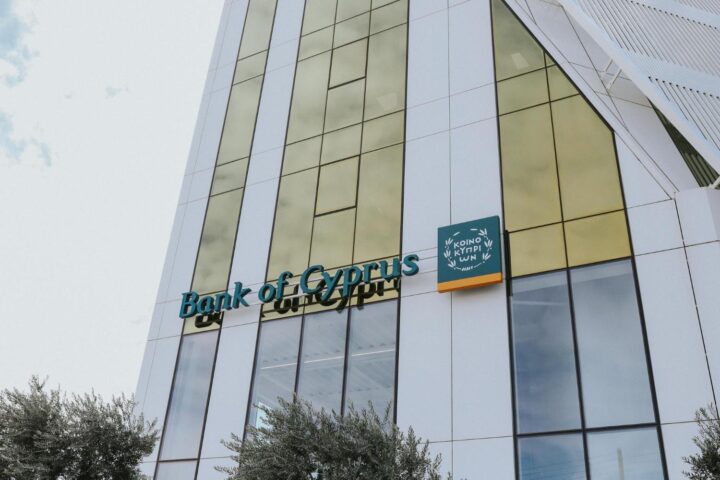Capital Intelligence Ratings has upgraded Cyprus’ Long-Term and Short-Term Foreign Currency Rating to ‘BBB-’ and ‘A3’ from ‘BB+’ and ‘B’ but revised the outlook to Stable from Positive.
A statement said the upgrade reflects the demonstrated resilience of the economy and improving fiscal fundamentals, with both the budget deficit and general government debt returning more quickly than expected to a sustainable path.
The government, it says, continues to proactively manage debt by securing its financing needs through timely market access while maintaining a substantial cash buffer to counter short-term shocks.
“Government contingent liabilities from the banking sector have declined significantly in recent years, although they remain comparatively high.
“Other fiscal risks currently appear manageable notwithstanding the challenging external backdrop associated with the fallout from the war in Ukraine.
“Cyprus’ ratings also reflect the benefits of European Union and eurozone membership, including the availability of financial support from the Recovery and Resilience Facility (RRF)”.
CI adds that economic growth has exceeded projections as real GDP grew by 6.1% in the first half of 2022, compared to 5.1% during the same period last year, reflecting a robust recovery in tourism and trade.
Despite the absence of the Russian market – which accounted for nearly 25% of total tourist arrivals in 2021 – tourism posted strong growth in the first seven months of 2022, with tourist arrivals increasing to 1.7 million from 638.292 during the same period last year.
This increase is mainly attributable to arrivals from the United Kingdom, Israel, Poland, Germany and Sweden.
CI expects GDP growth to average 4.7% in 2022, fuelled by resilient private consumption and investment in numerous economic activities supported by RRF funding.
It expects GDP growth to ease to an average of 3% in 2023-24.
The authorities are expected to receive €255 mln of the RRF in 2022, while the disbursement of the remainder is conditional on the implementation of structural reforms that target the public, energy, legal and digital sectors.
“Risks to the growth outlook remain pronounced and mainly stem from deteriorating economic performance in the eurozone and high inflation, fuelled by the economic fallout from the conflict in Ukraine and continued supply chain disruptions.”
CI has revised its baseline scenario, forecasting a general government budget deficit of 0.5% of GDP for 2022 from 1%.
It expects the overall general government budget position to return to surplus, averaging 1.1% of GDP in 2023-24.
“Reflecting the improvement in the budget position, general government debt declined significantly to 96.1% of GDP in the first half of 2022 and is on course to reach 80.6% in 2024.
“Notwithstanding the above developments, risks to the fiscal outlook could increase should the government relax fiscal policy and increase spending on subsidies, social welfare and public sector wages to ease the impact of rising inflation.
“Tax revenues could also decline should downside risks to GDP growth materialise”.
CI points out short-term refinancing risks appear manageable and have remained stable since the last review.
“This is attributable to the government’s sound fiscal management, favourable debt maturity structure and timely access to capital markets, and the prudent building of cash buffers that cover 100% of the government’s gross financing needs for at least the next nine to 12 months.
Bonds
The government still enjoys access to the Pandemic Emergency Purchase Programme (PEPP), which aims to absorb eurozone governments’ increased financing needs at relatively low borrowing costs.
“The PEPP is expected to remain in place until at least March 2023; however, the pace of bond buying transactions is gradually slowing down in tandem with the ECB’s efforts to contain the high level of inflation in the eurozone.”
According to the ECB, the accumulated net purchases of Cypriot government bonds declined to €2.483 bln (9.8% of GDP) in end-September, compared to €2.663 bln (10.6% of GDP) in end-March.
In the meantime, the weighted average maturity increased to 8.62 years in end-September from 8.55 years in end-March 2022.
“Our baseline scenario assumes that any increase in refinancing risks as a result of a prolonged impact of the war in Ukraine on the eurozone would be absorbed by appropriate measures that could be introduced by the ECB”.
The current account deficit increased to 7.3% of GDP in the first half of 2022 (5.5% in H1 21), while external debt reached 610.1% of GDP in June 2022, compared to 605.7% in December 2021.
“Cyprus still enjoys a small net creditor position of 0.02% of GDP should the assets of non-financial corporates and other sectors be included and the debt of Special Purpose Entities excluded.
“The ratings continue to be supported by high GDP per capita, as well as improving policy predictability.
“The ratings remain constrained by high general government indebtedness, the large debt overhang in the private sector, and moderate institutional weaknesses.
“Asset quality is affected by the debt overhang in the household and corporate sectors, which accounted for 39.1% and 50.0% of total non-performing loans (NPL) in July 2022, respectively.
“The aggregate NPL ratio declined slightly to 11.0% of total loans in July 2022 (from 11.4% in March 2022).
“Furthermore, accumulated provisions increased to a still-low 46.7% in July 2022, compared to 43.4% in December 2021.
“Nevertheless, banks’ capital adequacy remains satisfactory, with the average Common Equity Tier-1 ratio hovering around 17.5% at end-June 2022 – well above the regulatory minimum and the EU average”.
CI says that the Stable Outlook indicates the ratings will remain unchanged in the next 12 months and balances the risks from a potential economic slowdown in the eurozone and prolonged periods of high energy and food prices.










